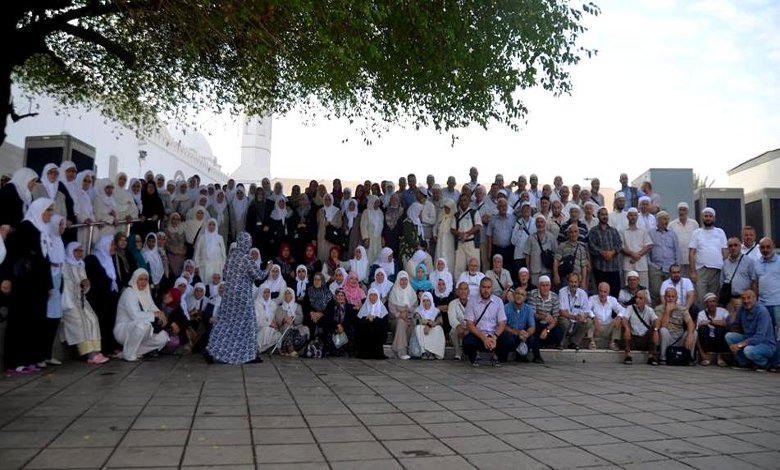News

Our Hajj pilgrims made Medinan tour
After completing the rituals in Mecca the pilgrims “migrated” to Medina. They will stay in the lustrous city nine days. During their stay in the city of the Messenger of Allah the pilgrims stay in Nusk-ul-Medina Hotel, which is located just three minutes away from the home and the mosque of Muhammad (pbuh). This gives the pilgrims the opportunity to make use of their time with a regular performance of worshiping in the mosque without any difficulties.
The pilgrims feel a great joy of the program which is prepared by the organizational team of the Grand Mufti’s Office and includes lectures, joint rituals and visits of historical and cultural sites.
One of the most important activities in Medina is the Medinan tour. Within this tour the Jumma Mosque was visited, which is famous with the fact that Muhammad (pbuh) performed the first Friday prayer at that place. After this the pilgrims went to the Quba Mosque which is the first mosque built in Medina. They performed a prayer of two rakat which equals one pilgrimage of Umrah. The Mosque Qibletein (The two qibla) was the third visited mosque. The Prophet (pbuh) performed a prayer in it facing the two Qibla – first to Masjid Al-Aqsa (in Jerusalem) and then to Masjid Al-Haram (in Mecca). After this prayer Kaaba becomes qibla for the Muslims all over the world.
One of the most exciting visits was at the foot of the mountain of Uhud, where the Battle of Uhud took place and many prominent Muslims sacrificed their lives (became shahid). There the pilgrims went exactly at the place where the most critical battle took place, namely the mount of Aynein, known as Archers’ hill. At this strategic place designated by Muhammad (pbuh), the Deputy Grand Mufti Vedat Ahmed gave a short lecture on “The Battle of Uhud”.
The place where the battle of Khandaq took place also was visited. This place is also known as Saba Masajid (The seven mosques). Seven mosques existed there in the past and today on their place is built the bigger mosque Fath. At the peak of the hill there still can be seen the ruins from the Ottoman military constructions which served for protection of Medina.
At the end the pilgrims visited the complex for Qur’an-i-Kerim printing, where annually are printed about 10 million copies of translations in more than 60 languages.